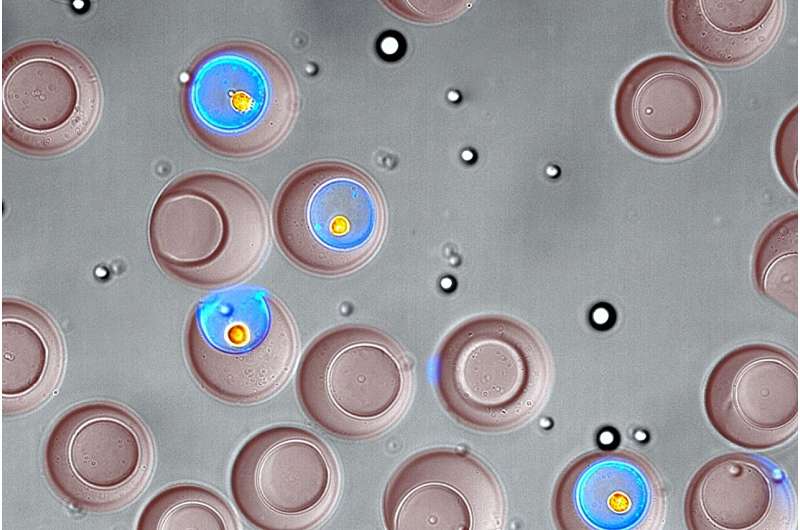This article has been reviewed according to Science X's editorial process and policies. Editors have highlighted the following attributes while ensuring the content's credibility:
fact-checked
peer-reviewed publication
trusted source
proofread
Nanovials method for immune cell screening uncovers receptors that target prostate cancer

A recent UCLA study demonstrates a new process for screening T cells, part of the body's natural defenses, for characteristics vital to the success of cell-based treatments. The method filters T cells based on the receptor proteins found on their surface—which enable them to latch onto certain threats—and the type and amount of cell-killing or immune response-triggering molecules that they secrete.
The research is published in the journal Proceedings of the National Academy of Sciences.
The researchers discovered three previously unidentified, naturally occurring T-cell receptors that target prostate cancer using their screening method. In validation tests, T-cell receptors associated with the highest levels of secretion were the most likely to elicit a response against cancer cells. Rate of functional T-cell receptors was around tenfold higher than using previous techniques.
Immunotherapy, treatment that harnesses the body's natural defenses, is an ever-growing subject of research into cancer and other severe illnesses. The potential of engineered T cell-based immunotherapies comes in part from their ability to narrowly target signatures of disease that are "recognized" by genetically engineered receptors. Since 2017, seven therapies deploying immune cells have gained approval from the Food and Drug Administration to treat blood and skin cancers.
The scientists used nanovials, microscopic bowl-shaped hydrogel containers developed at UCLA. Inside, the containers are customized to include specially shaped molecules that enable each to trap one cell plus selected secretions.
The team first evaluated a population of 20 million T cells sourced from one healthy patient's blood sample. Different groups of nanovials had targets associated with different common viruses. This study validated the ability for nanovials to find T cells, and their receptors, that react to viruses.
A second experiment with a different patient applied the technology to a much more challenging problem: rare prostate cancer targets the scientists had identified in previous studies. Importantly, those molecular targets acted to both capture the T cells and cause them to secrete certain molecules that kill target cells. In other experiments, the nanovials also had molecules allowing each to capture more than one type of immune-activating secretion.
The three never-before-seen receptors for prostate cancer found in this research could ultimately lead to new tumor-fighting immunotherapies. The ability to select T cells that both bind to a disease-related target and secrete plenty of molecules that trigger an immune response—displayed in the study—is expected to provide major advantages for uncovering additional new disease-targeting receptors, developing cellular therapies and translating those therapies to benefit patients. Using standard lab techniques to label and analyze the nanovials and their contents means that more researchers can apply the new technique.
More information: Doyeon Koo et al, Defining T cell receptor repertoires using nanovial-based binding and functional screening, Proceedings of the National Academy of Sciences (2024). DOI: 10.1073/pnas.2320442121
Journal information: Proceedings of the National Academy of Sciences
Provided by University of California, Los Angeles




















